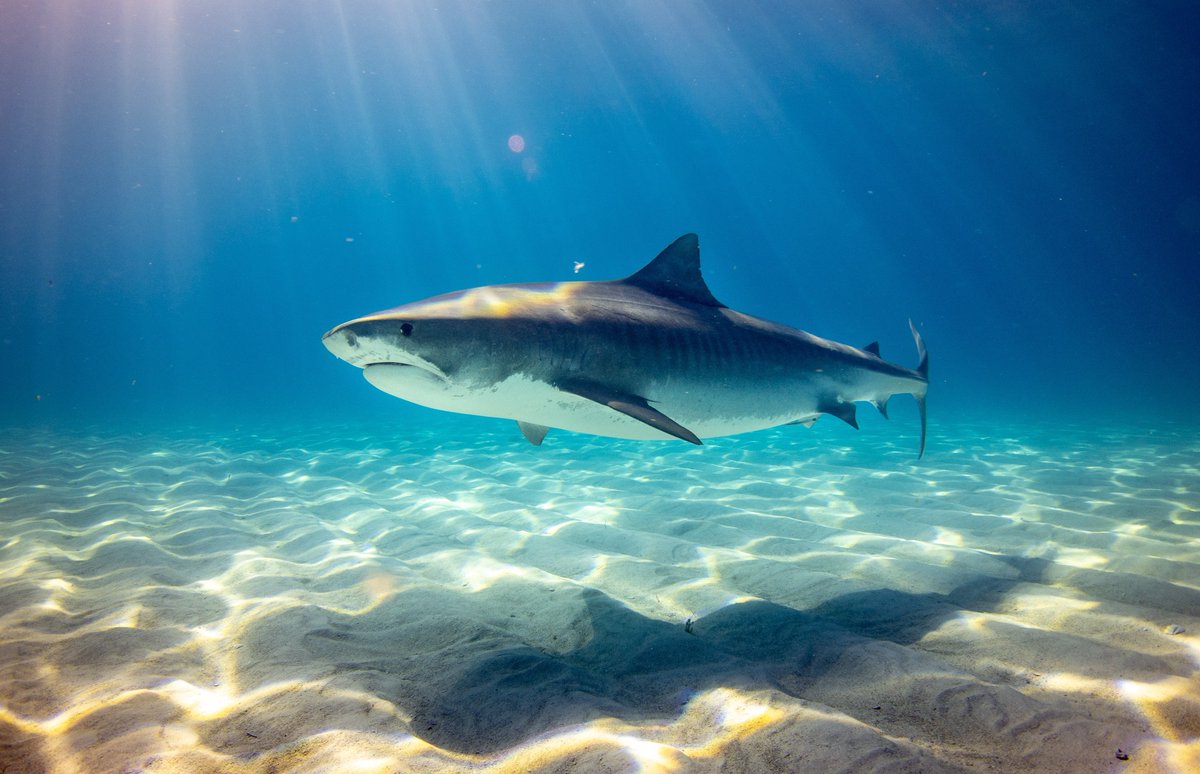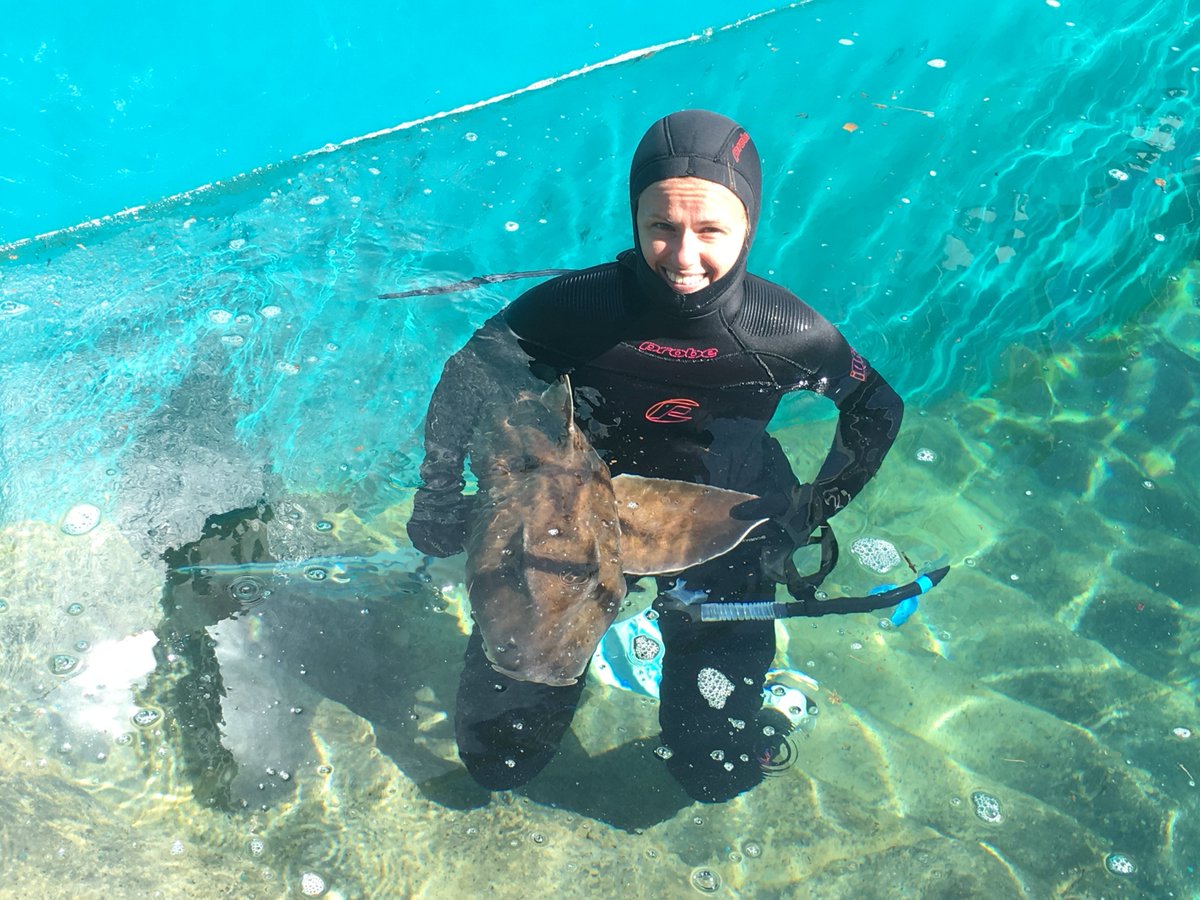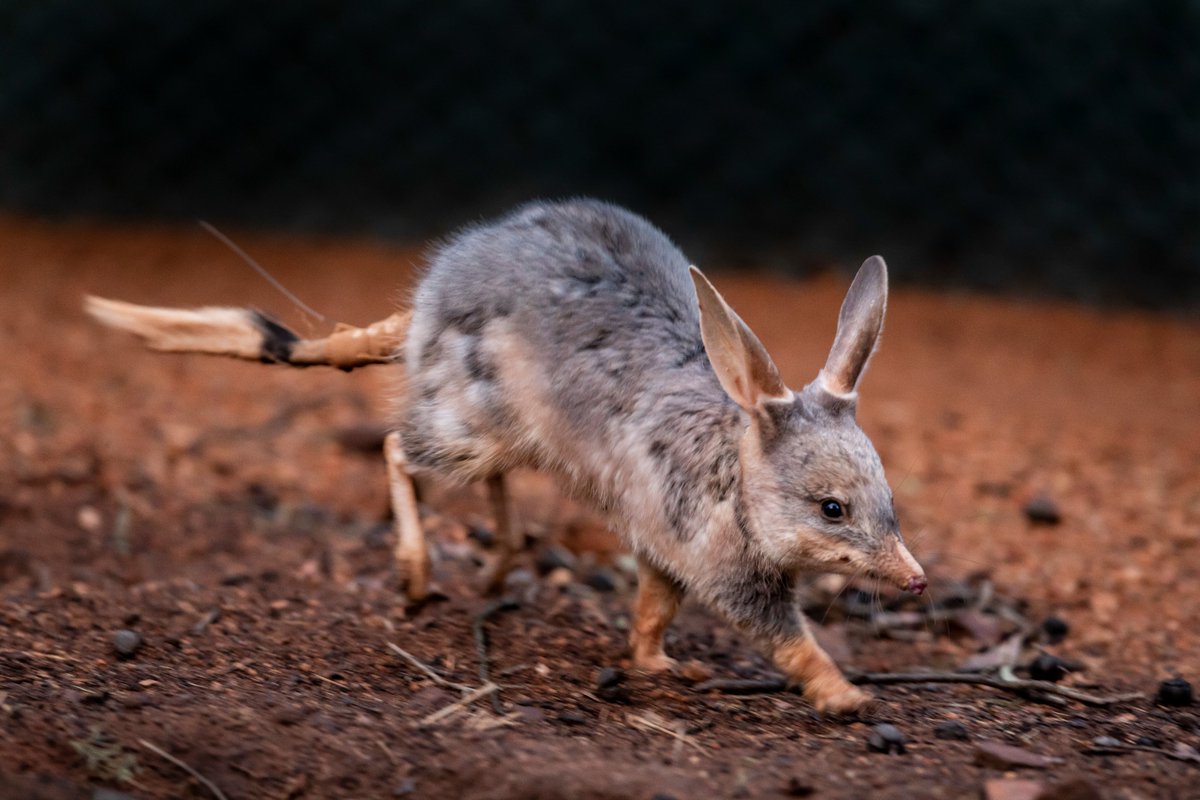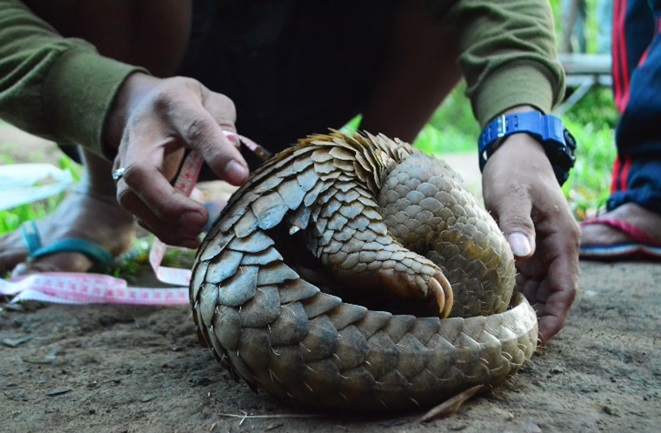Discover and read the best of Twitter Threads about #ScienceWeek
Most recents (24)
How did you study Science in Anglo-Saxon England?
Well, this #ScienceWeek, let us introduce you to Bede 'the Venerable', and his scientific treatises (and computus) exploring the mathematical and physical basis of time ⌛
Well, this #ScienceWeek, let us introduce you to Bede 'the Venerable', and his scientific treatises (and computus) exploring the mathematical and physical basis of time ⌛

The idea of science in the early Middle Ages is a broad one, encompassing many subjects. The root of the word ‘science’ comes from the Latin scientia, meaning ‘knowledge’. In the Middle Ages, a person’s ‘science’ referred to his understanding of a particular topic.
🧵1. #IPERN officially launched on #StPatricksDay 2021 so it's our 1st birthday today!🎂🚑☘ It's been quite a year - we've hosted 10 events featuring 49 speakers (31% International 🌍 65% Female 🚺). Presented at 3 conferences, secured 3 grants and launched 5 SIG! #IrishEMS
2. How it all began… we announced ourselves to the Twitter world on Feb 1st '21. In Ireland this is traditionally the start of Spring (#Imbolc) so a time for new beginnings. It’s also St. Brigid‘s Day our matron saint who Is renowned as a healer #IrishEMS tinyurl.com/2p8w2zwt
3. Our official #IPERN launch on #StPatricksDay 2021 featured a fantastic array of Irish researchers presenting "elevator pitches" of their work and also included best wishes from international friends & colleagues! tinyurl.com/2p92at99 #IrishEMS
Taronga Wildlife Hospital cares for rescued marine turtles, prior to their release back to the wild. Preliminary satellite tracking data from rehabilitated #turtles indicate certain sites along the #NSW coast may be important foraging & resting grounds. #ScienceWeek 

Taronga scientists Dr Jo Day & Dr Phoebe Meagher are working in collaboration with Bioplatforms Australia, Griffith Uni, Dolphin Marine Conservation Park, Australian Seabird Rescue, Irukandji Shark & Ray Encounters, to understand marine #turtle movement & habitat use in #NSW 

The team are currently identifying the nesting stock origin of green #turtles found in NSW waters using #DNA. Stable isotope analysis then identifies key foraging sites in #NSW. Collectively, their collaborative #science informs direct #ConservationManagement. 

Taronga’s marine scientists, in collaboration with Macquarie Uni & others internationally, are investigating the effects of pulsed electric fields on #shark physiology & behavior to deliver innovative improvements in deterrents to save the lives of people & #sharks. #ScienceWeek 

This @ARC_gov_au funded project builds on a previous ARC LP by this team that uncovered information on #shark vision and demonstrated the effectiveness of counter-illumination (light emitting) devices in deterring shark attacks
The new project (late 2020>) will test the effectiveness of existing & improved personal deterrents against attacks from white, bull & tiger #sharks. This should reduce fatalities by increasing device-use, while also reducing the need for indiscriminate meshing/culling programs. 

Taronga scientists also manage the Australian #Shark Attack File (ASAF). This long-term database & resource provides valuable insights on incidents and the effectiveness of possible deterrents. #ScienceWeek taronga.org.au/conservation-a….
Research using ASAF data led by Laura Ryan with Taronga’s Dr David Slip, Macquarie University, DPI and UNSW scientists, generated predictive models for #shark attacks in Australian waters based on environmental conditions. . doi.org/10.3354/meps13… 

On the subject of Port Jackson #sharks, another collaborative project involving Taronga's Dr Jo Day used long-term acoustic monitoring to show that PJ #sharks migrate inshore in winter to breed. PC: Bluebottle Films. #ScienceWeek doi.org/10.1071/MF16122 

Further #ConservationGenetics work led by Taronga's Dr Jo Day uncovered evidence of high breeding site fidelity in female Port Jackson #sharks (Sydney Harbour and Jervis Bay) & highlighted important areas & actions for their #ConservationManagement. publish.csiro.au/MF/MF18255
Previously the extent of reproductive philopatry (tendency to return to an area to breed) was unknown for this species, which made targeted #ConservationManagement impossible. #ConservationGenetics #MarineScience #ScienceWeek 

As Taronga’s Research & #Conservation Coordinator, & a marine biologist specializing in #ConservationGenetics, Dr Jo Day, wears many hats – & most are waterproof! Jo’s work covers many areas & species, including the little-known Port Jackson #shark... #MarineScience #ScienceWeek 

Data from GPS and accelerometer tags fitted to Taronga zoo-based Port Jackson #sharks allowed the team to identify resting & active swimming, as well as feeding behaviour. 

Using fine and broad scale #MovementEcology data from these Port Jackson #sharks, #MachineLearning models allowed the team to identify these key behaviours in this elusive #marine #shark species. mdpi.com/1424-8220/20/2…
Getting lost in the crowd can be a problem when you’re an #endangered sea lion pup. Taronga behavioural ecologist @PitcherBen & collaborators are decoding #Australian #sealion communication to understand how mothers and pups recognise each other in a busy colony #ScienceWeek 

Australian sea lions use a combination of sound, sight and smell to communicate and recognise their pups. Mothers can use the size and colour patterns in pup coats to help located their offspring in a colony royalsocietypublishing.org/doi/pdf/10.109… @RSocPublishing #AnimalCommunication
Smell is critical to recognition. Mums will smell pups they encounter while searching the colony to confirm which pup is their own offspring. Each sea lion has a unique smell and mums learn the odour of their pup sciencedirect.com/science/articl… #AnimalCommunication
Preserving natural behaviours can be as important as other considerations like genetic diversity when planning a #ConservationBreeding program. Naivety to predators is one of the biggest challenges when releasing animals into the wild. #ScienceWeek 

Taronga’s #ConservationBehaviour Lab works with keepers & partners to ensure species like #RegentHoneyeaters display behaviours needed to survive in the wild - such as identifying & responding to predators. Mixing in a multispecies aviary is one approach frontiersin.org/articles/10.33…
To understand if Taronga-bred #RegentHoneyeaters recognise wild predators like currawongs, we’re showing them predator models (& controls!). Safe exposure to danger allows us to see how they’ll respond when released. If needed, we'll teach them what a predator looks like 

Taronga is also reminding #RegentHoneyeaters how to tweet! Their song has been changing, perhaps due to small fragmented populations &reduced opportunity to learn from adults. Taronga keepers began playing songs to juvenile birds to teach them the right ones to sing. #ScienceWeek 

Results are showing that #RegentHoneyeaters that were tutored to sing, either directly by adult birds or by virtual tutoring, had a better chance of surviving in the wild.
We’re now working with researchers at ANU to understand how best to teach birds to sing and why song is important to survival theguardian.com/australia-news…
The #RegentHoneyeater is one of Australia’s most #CriticallyEndangered birds. There are <350 birds left in the wild. For >20y, Taronga has been #ConservationBreeding an insurance population. Since 2008, >300 birds have been released to bolster wild populations. #ScienceWeek 

#RegentHoneyeaters are in decline due to threats from #habitatloss and degradation. #Drought, #bushfire, competition, and now even the precariously small size of the remaining population all pose risks to the species’ survival.
Our team of #RegentHoneyeater keepers are experts in #ConservationBreeding these amazing birds. Here specialist keeper Kara Stevens explains our progress at Taronga Western Plains Zoo, Dubbo.
Another flagship and large collaborative #ConservationBreeding project that Taronga is involved in concerns the #CriticallyEndangered #PlainsWanderer, a bird that few people have probably heard of and even fewer have seen. #ScienceWeek 

The #PlainsWanderer has no living close relative, which places it top of the @EDGEofExistence list. Remnant populations of this small ground-dwelling bird are mostly in Victoria, eastern South Australia and in the western Riverina region of NSW.
Though excellently camouflaged, #PlainsWanderer are just the right size to be eaten by invasive foxes. Taronga is working with @ZoosVictoria to establish an insurance population & recently built a #ConservationBreeing facility at Taronga Western Plains Zoo #sanctuary, #Dubbo. 

A fantastic moment in Taronga’s #bilby #conservation program was releasing #bilbies to SturtNP Western #NSW as part of the Wild Deserts Project. This large collaboration centres on #reintroduction of locally #extinct species. #SavingOurSpecies #ScienceWeek 

The #bilbies are a key part of the Wild Deserts project in #SturtNP and, as ecosystem engineers, are paving the way to #HabitatRestoration across thousands of hectares in #NSW. #SavingOurSpecies PC: Bobby-Jo Vial 

The #reintroduction of #bilbies to the wild as part of the Wild Deserts project with UNSW, DPIE and the region’s Traditional Owners, the Wongkumara and Maljangata people, was a great step forward in restoring this western corner of NSW. PC: Bobby-Jo Vial 

But this is only part of the #bilby story. How did #bilbies behave once they were released into the Taronga #sanctuary, and did this affect overall success? To find out, we attached GPS devices & radio-transmitters to bilbies to track their movements post-release. #ScienceWeek 

GPS devices collected incredibly detailed data on nightly #bilby movements, and radio-transmitters allowed us to locate #bilbies underground during the day. This track shows how bilby “Charlie” used the sanctuary just after release
Tracking data revealed hidden #bilby behaviours, such as their little-known social lives! It turns out that #bilbies have quite complex #socialnetworks and that bilby sociality may help explain some of the story behind their post-release success.
Once #feralpests were removed and undetected on #cameratraps or other surveys in the Taronga Western Plains Zoo sanctuary for some time, it was time to cut the ribbon, and the apron strings, and release the #bilby founders. #ScienceWeek 

Of course, all #bilbies underwent thorough health checks with the Taronga Western Plains Zoo veterinary professionals prior to release. #WildlifeHealth 

“Allow me to reintroduce myself”… some #bilbies were super keen to get on with the program, digging out of the pre-release yard into the #sanctuary. Fortunately, their radio-transmitters allowed the team to locate, catch and return them, ready for the official release. 

A flagship project for Taronga is the greater #bilby #conservation breeding program at Taronga Western Plains Zoo in #Dubbo, which is a collaboration with multiple partners, including the @NSWDPIE #SavingOurSpecies program. #ScienceWeek 

While the ultimate aim is securing the species in the wild, producing animals fit #ForTheWild and a sanctuary fit to house them in, constitutes a significant amount of the work towards achieving this goal.
To prepare for the #bilby release, introduced predators (#foxes) and herbivores (#rabbits) were detected, removed, and excluded from the 110ha fenced #sanctuary. Detection involved #cameratraps, track plates, and thermal cameras 

In our zoos, we’re constantly observing & monitoring the animals & their environments. We measure sound levels, temperature fluctuations & visitor numbers. Understanding how animals perceive their environments is fundamental to designing & maintaining good zoos. #ScienceWeek 

An example of a recent research project in at Taronga Zoo in #Sydney was to look at the so-called visitor effect on our animals. E.g. How do our animals perceive zoo visitors? #HumanAnimalInteractions 

We observed the interactions between four species of macropods (#kangaroo, #wallaby) and visitors in a walk-through exhibit. As visitor numbers increased, animals spent more time ‘on the lookout’ keeping an eye on what the visitors were doing. #HumanAnimalInteractions 

As a world-leader in #WildlifeManagement, Taronga continuously improves how we monitor #AnimalHealth & #AnimalWelfare in our zoos & our #conservation programs. This includes tackling the challenges of remotely monitoring, when we can’t have eyes & ears on the ground. #ScienceWeek 

Observing #AnimalBehaviour & doing #AnimalHealth checks is only part of the picture. New #tech4wildlife help us identify potential welfare issues in real-time, especially for animals in remote locations, or large groups, or those where immediate up-close assessment isn't possible
Taronga scientists collect and analyse data on wild and zoo-based animals using field-based observation, video footage, #drones, and #CitizenScience. From these data we gain unique insights into both fine-scale movements of individuals, and broad behavioural states of the animals
#Coralreefs incl. the #GreatBarrierReef are threatened by ocean warming & acidification, as a result of human-driven #ClimateChange. For an overview of climate projections, the latest #IPCC report takes a deep sobering dive into what's ahead. #ScienceWeek ipcc.ch/assessment-rep…
#Coralreefs are complex life support systems and their degradation has devastating impacts on marine life and on terrestrial animal populations, including humans. #RRAP
As environmental events and stressors lead to the loss of #coral & threaten the #GreatBarrierReef, initiatives such as Taronga’s CryoDiversity Bank offer a means to secure their current #GeneticDiversity. #RRAP
In 2019, a population of Booroolong #frogs was rescued & translocated to Taronga for temporary holding in light of devastating impacts on its environment following prolonged drought & approaching Black Summer #bushfires zooaquarium.org.au/public/Public/… #SavingOurSpecies #ScienceWeek 

Time was of the essence! These #frogs live only 3-4 years & were all adults on arrival at Taronga. These critical but ageing founders possess unique genes necessary for their species to adapt and survive in an ever-changing environment. 

Cryopreserving sperm can be stored indefinitely, and so we can ensure that the #GeneticDiversity of wild populations is retained by helping these precious males produce offspring. Look at the frog sperm here!
#UrbanEcology also plays a key role in forming and maintaining meaningful connections with nature. Maintaining these through adolescence is crucial to #conservation and tackling our environmental issues and the #BiodiversityCrisis. @NSWEducation #ScienceWeek 

Our recent research showed that primary kids in #Sydney were more connected to nature than kids in high school doi.org/10.1371/journa… Also, girls were more connected than boys, and were more likely to volunteer for #conservation.
Read more about this work, and what can be done to tackle the adolescent dip in connection with nature, here in @ConversationEDU: theconversation.com/1-in-2-primary…
#CitizenScience allows Taronga & collaborators to collate valuable ecological data over scales that would be difficult to achieve through traditional methods. Another plus? It also means that you can get directly involved in Taronga #Science! #ScienceWeek 

The #brushturkey project is a great example of this onlinelibrary.wiley.com/doi/10.1111/ae… Taronga's Dr John Martin & Dr Alicia Burns & their collaborators were finalists in the 2020 Australian Museum Eureka Prize for Innovation in #CitizenScience. Go team! #ScienceWeek 

While accolades are nice, significant ecological insights are the main outcome. These apps are a gift that keeps on giving, and recently Taronga joined forces with partners to combining them into an all new @BigCityBirds app. 

Day 4 of #ScienceWeek, and we’re following in the wingbeats of Dr John Martin (@Wingtags) from Taronga’s #ConservationScience team. Taronga’s terrestrial ecologist focuses on #UrbanEcology #CitizenScience. 

From #binchickens to dumpster-diving #cockatoos, Taronga's #UrbanEcology work is rich and varied. Take a peak at some of these collaborative #CitizenScience projects and their outcomes in today’s #ScienceWeek threads. 

Check out this clever #cockatoo research recently published in @ScienceMagazine science.sciencemag.org/content/373/65…. Here’s a great article in @GuardianAus about this #SocialLearning research theguardian.com/environment/20… @DrBarbaraKlump @LucyMAplin @BigCityBirds1 @Wingtags
Today, on day 3 of #ScienceWeek, we’re also delving into another major driver of #biodiversityloss and focus of Taronga #Science: the #illegalwildlifetrade or #IWT. Tonnes of live animals & their parts are traded illegally internationally driving many species towards #extinction 

Taronga and partners are developing novel #IWT tools and technologies to curb the illegal removal of #wildlife from their natural environments, which negatively impacts individual #animalhealth, #animalwelfare, and #ecosystemresilience 

#wildlife laundering might be a new term for you, but players in the #InternationalWildlifeTrade can pass off wild animals by masquerading them as captive bred. Enter Taronga’s Wildlife Forensic #Science team. #WildlifeCSI #IWT



